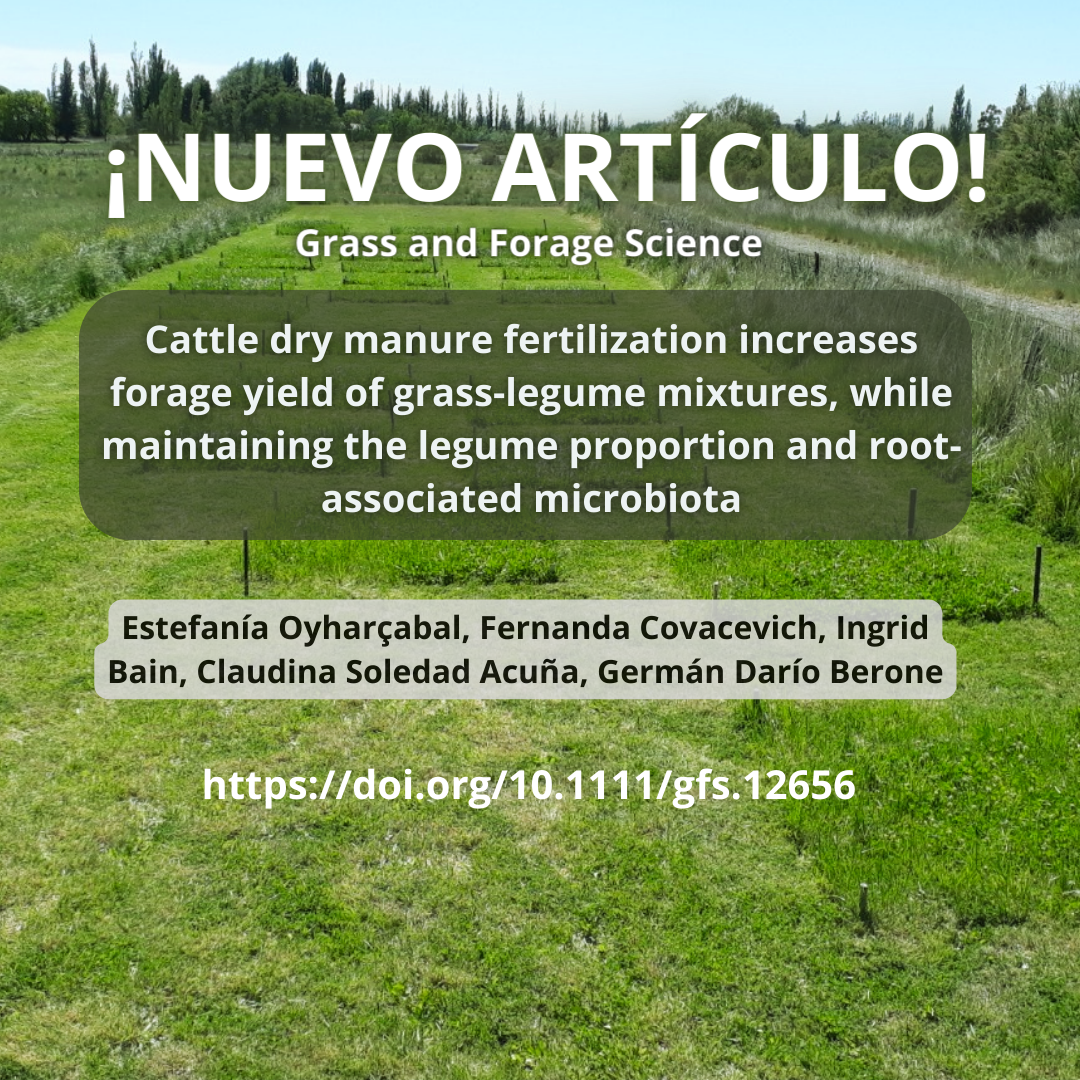Grass and Forage Science, 24 March, 2024
Abstract
The aim of this study was to find ways to improve the forage yield of grass-legume mixtures without compromising soil biodiversity. In Argentinean Patagonia, the effects of applying cattle dry manure (M) and urea (U) (0, 60, 120, or 240 kg N ha−1 year−1) were assessed on herbage production of irrigated fescue-lotus mixtures, as well as on the activity/abundance of autochthonous arbuscular mycorrhizal fungi and N-fixing rhizobium bacteria. We hypothesised that manure has advantages over urea in increasing forage yields while maintaining the proportion of legumes and root-associated microbiota. The 120 U, 240 U, and 240 M resulted in the greatest forage production; however, yield varied depending on the source applied. The high productivity of the 120 U and 240 U was probably due to the fast grass growth immediately after fertilization, which resulted in a depressed growth of the legume. The high yield of the swards fertilized with 240 M was probably due to slight and delayed growth of grass without legume yield decline. The highest radiation interception was found in swards with a low legume proportion, suggesting a light competition from grass fertilized with the highest urea doses, which were also consistent with the highest N and P nutritional status. The microbial activity/abundance were not affected by fertilization, but the final number of nodules was positively associated with the legume proportion. In conclusion, manure fertilization increased forage yield of the mixtures, while preserving the legume proportion and the root-associated microbiota. Our findings aid in reducing synthetic-N fertilizers applied in pasture-based livestock systems.


